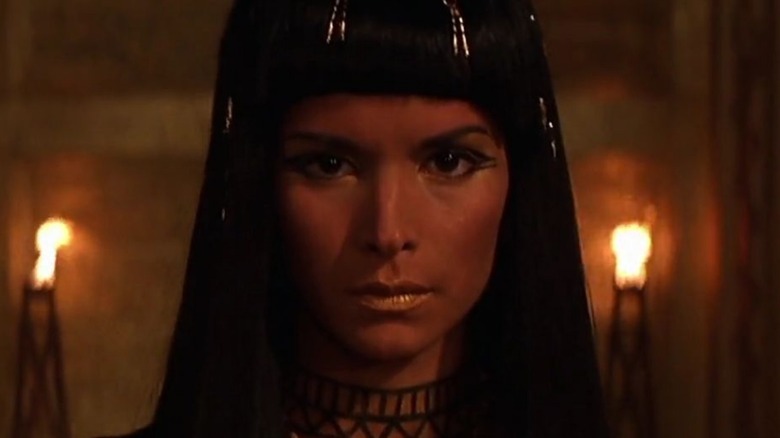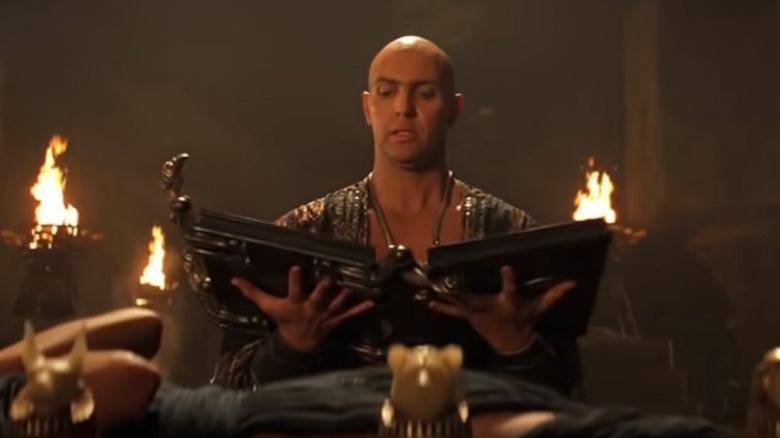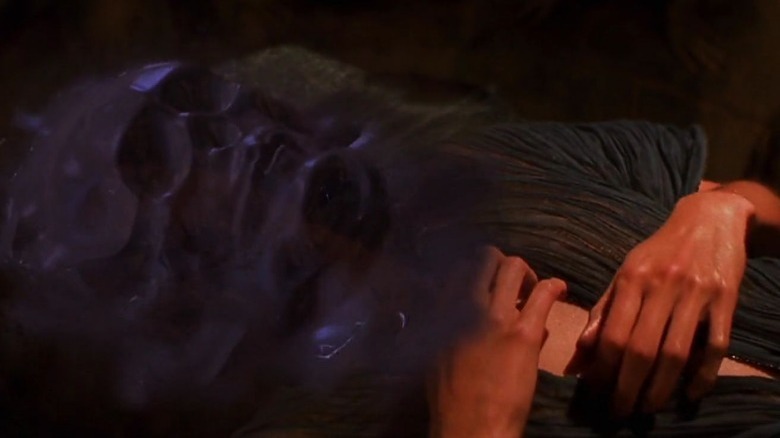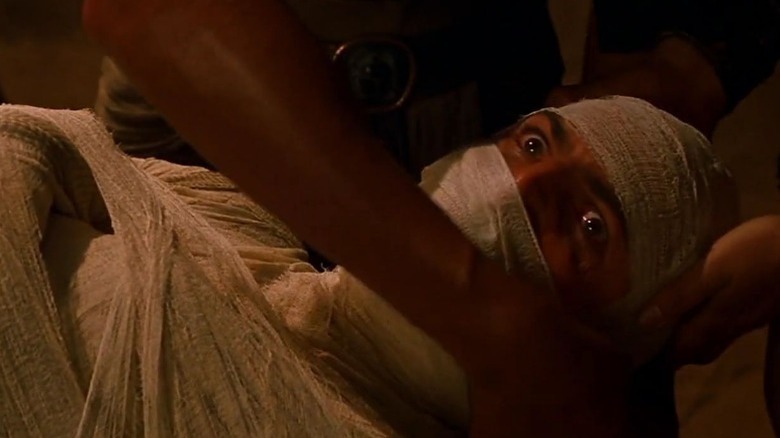What The Mummy Movies Get Wrong About Mummification
Nobody expects 1999's "The Mummy" to double as a Ph.D. course in Egyptology. This was a remake of a 1930s film, after all, with all the colonialist malarkey that entails. Both versions of "The Mummy" say more about the cultures that were inspired by ancient Egypt than about ancient Egypt itself.
The west first went mummy-crazy in the Victorian era. Prince Albert was dead, Victoria made mourning cool again, and spiritualism was giving hope of communicating with the dead. Contemporary archaeological discoveries in Egyptian tombs were then thrown into this cauldron of death obsession. Victorian Egyptomania saw the west consuming mummies at an alarming rate. Literally, they sometimes ate the mummies, per Smithsonian Magazine.
The original 1932 "Mummy" was made after the discovery of King Tut's tomb and the misfortunes of those who discovered it. A mummy's curse became fixed in the western consciousness, and from there came the story of Imhotep and his lost lady love. The movie throws in some Hindu concepts of reincarnation, for added color. The 1999 remake uses much of the same plot, with more action and comedy than the predecessor. And it gets just as much wrong about mummification and Egyptian concepts of death as the Victorians did.
The Book of the Dead is a scroll, not a book
The bulk of the mummification content in "The Mummy" comes in the film's prologue. Set in 1290 BCE, Imhotep (Arnold Vosloo) attempts to revive his lover Anck-su-namun (Patricia Velásquez) using the Book of the Dead. We see him open a giant, ancient-looking tome and read incantations over his lover's corpse.
But in 1290 BCE, a book with pages bound between two covers is sci-technology from the future. It's as out of place as a Starbucks cup in "Game of Thrones." According to the Smithsonian, the earliest known bound book is from 868 CE, over 2,000 years after the prologue of "The Mummy."
The Book of the Dead is real, however. But it's not a rare tome that can only be opened with a special puzzle box. It was written on a papyrus scroll, sometimes as long as 30 feet. Copies abound, even today. "The ancient Egyptians, like NASA engineers, believed in redundancy," Louise Lerner wrote for the University of Chicago. "Because it was so important, a copy of the Book of the Dead could be written and illustrated on papyrus in full to accompany the dead; but versions of its spells also could be inscribed on magic bricks set into the walls of the tomb. They would be carved into green stone scarabs and tucked inside the mummy's wrappings and written on linen bandages that wrapped around the body."
That's not how Egyptian souls work
Ardeth's narration says that Anck-su-namun's soul had already been sent to "the dark underworld." Imhotep conducts a ceremony that brings Anck-su-namun's soul out of the underworld and into our world as a goopy CGI wraith. This CGI soul seems to go into Anck-su-namun's body, but is yoinked back into the underworld when the Pharaoh's guards interrupt the ceremony.
The problem with this scene is that it uses the Christian model of the soul rather than the Egyptian. Christianity tends to view the soul in Cartesian dualistic terms: there's a soul and a body. But that's way too few soul components to an ancient Egyptian. World History Edu states that a living being consists of their Khet (physical body), Sah (spiritual body or ghost), Ib (heart/seat of emotional and rational thought), Ren (name), Shut (shadow), Sekhem (power or form), Ka (life force), and Ba (personality).
Funerary rites were designed to reunite the Ka and Ba into the Akh, which is as close to a western concept of the soul as ancient Egyptians got. This is the being that dwells in the afterlife if your Ib is judged worthy by Anubis. Imhotep appears to be trying to push Anck-su-namun's Akh back into her Khet. Which makes no sense, as her Khet is minus every important organ besides the heart. Love makes you do crazy things.
These mummies are too wet!
The main problem with all the mummies in the prologue of "The Mummy" is that they could never stay preserved from 1290 BCE to 1926 CE. Why? Too much moisture. The whole point of mummification was to preserve the Khet, whose continued existence was vital to an Akh's well-being in the afterlife. Dehydration was the name of the game. This is clearly stated in the Book of the Dead: "Hail to you, my father Osiris! You shall possess your body; you shall not become corrupt, you shall not have worms, you shall not stink, you shall not become putrid, you shall not become worms. I am Khepri; I will possess my body forever." The Getty Museum explains that mummies were buried in salt for days to leech all the water out of the corpse.
Imhotep and his priests are mummified alive, which is shown as being wrapped up in linen and left to die of thirst or hunger. If that happened, the "mummies" would putrify before ever being discovered by colonial archaeologists. According to the Smithsonian, mummification took 70 days. Linen bandages don't factor in for several days after organ removal and salt curing. And if we're being extra pedantic, the first step in mummification is to remove the brain. That would turn a live mummification into a dead one real quick. But why let facts get in the way of good cinema?



